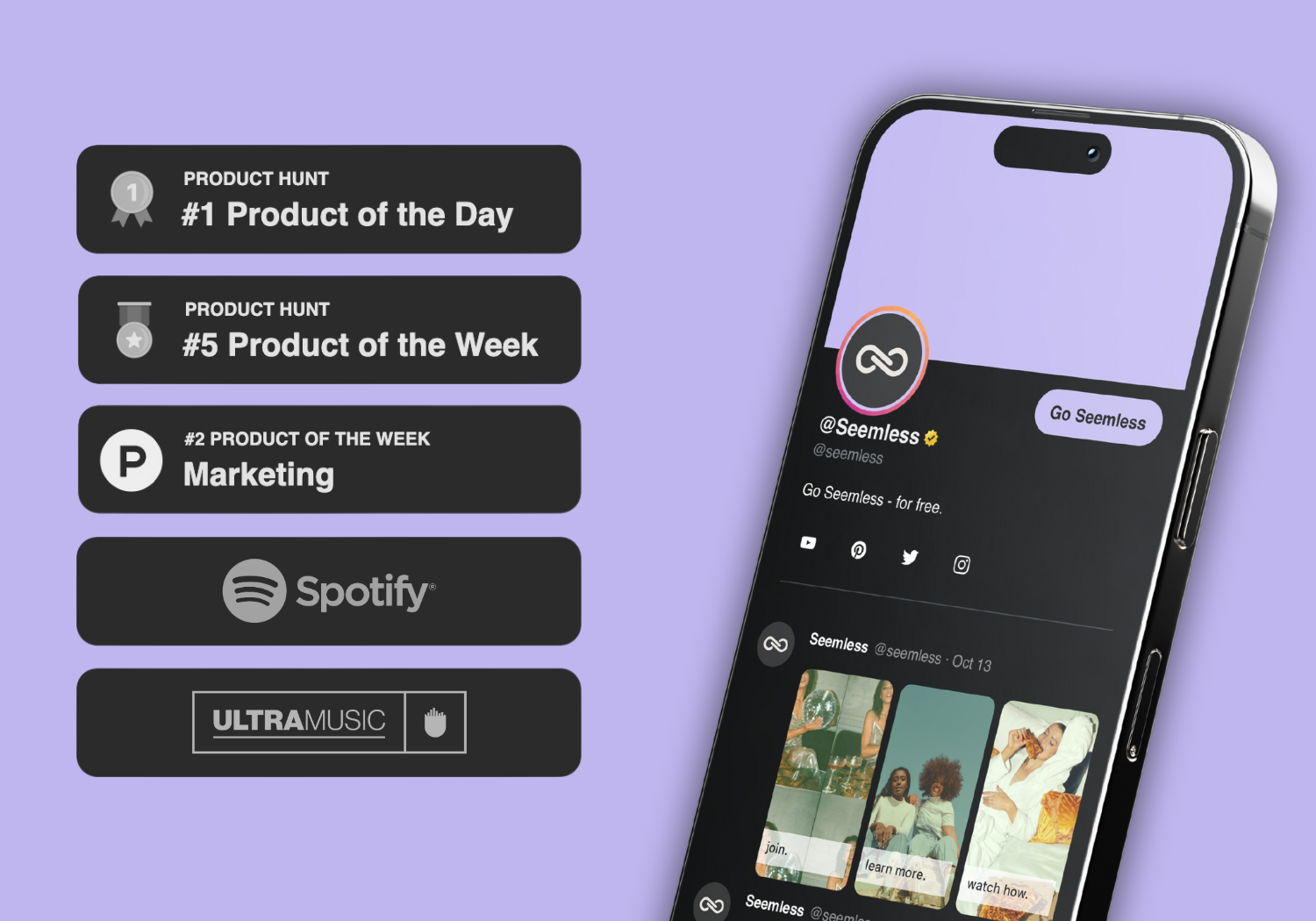In the digital era, social media has emerged as a crucial platform for influencers and brands to engage with their audience and market their offerings. The “link in bio” feature is a key component of social media marketing, allowing users to include a clickable URL in their profile that directs followers to a specific webpage. This functionality is vital for influencers and brands, providing a direct path for their audience to access important content such as blog posts, product pages, or promotional offers.
Influencers rely on the link in bio to drive traffic to their websites or other platforms where they can monetize their content. This may include promoting affiliate products, selling merchandise, or offering online courses. For brands, the link in bio serves as a valuable tool to direct traffic to their e-commerce website, landing pages for new product launches, or promotional campaigns.
It acts as a gateway for potential customers to explore the brand’s offerings and make purchases. The link in bio also enhances user experience on social media platforms. Followers can easily access desired content by clicking the link, rather than manually typing a URL from a post or story.
This convenience saves time and reduces the likelihood of users becoming distracted before reaching the intended destination. Furthermore, the link in bio allows influencers and brands to promote multiple pieces of content or products simultaneously by utilizing tools that create landing pages with multiple clickable links. In summary, the link in bio is an essential tool for influencers and brands to drive traffic, improve user experience, and achieve their marketing objectives on social media platforms.
It provides a seamless way to connect with audiences and maximize the impact of social media marketing efforts.
Key Takeaways
- A link in bio is crucial for influencers and brands to drive traffic and engagement to their desired content or products.
- Link in bio tools can help influencers and brands track and analyze the performance of their links, optimize their content, and drive more conversions.
- When choosing a link in bio tool, look for features such as customization options, analytics, integration with other platforms, and ease of use.
- Comparing different link in bio tools can help influencers and brands find the best fit for their specific needs and goals.
- When choosing the best link in bio tool, consider factors such as pricing, customer support, and the tool’s ability to adapt to future trends and changes in the industry.
How Link in Bio Tools Can Benefit Influencers and Brands
Tracking and Analyzing Performance
One of the key benefits of link in bio tools is the ability to track and analyze the performance of the links included in the bio. By providing insights into click-through rates, traffic sources, and user engagement, these tools enable influencers and brands to gain valuable data that can inform their marketing strategies and content creation.
Customization and Engagement
Furthermore, link in bio tools often offer customization options that allow users to create visually appealing and branded landing pages for their links. This not only enhances the overall aesthetic of the profile but also provides a more engaging experience for followers.
Advanced Features and Flexibility
Additionally, some link in bio tools offer advanced features such as scheduling links, retargeting capabilities, and integration with e-commerce platforms, providing influencers and brands with powerful tools to drive conversions and sales directly from their social media profiles. Another significant benefit of link in bio tools is the ability to overcome the limitations imposed by social media platforms on the number of links that can be included in posts or stories. By utilizing a link in bio tool, influencers and brands can effectively bypass these restrictions and promote multiple pieces of content or products simultaneously. This flexibility is particularly valuable for those looking to diversify their offerings and cater to different segments of their audience.
Overall, link in bio tools offer a multitude of benefits for influencers and brands, empowering them to optimize their social media marketing efforts and achieve their business objectives.
Top Features to Look for in Link in Bio Tools

When choosing a link in bio tool, there are several key features that influencers and brands should look for to ensure they are getting the most out of the platform. Firstly, customization options are essential for creating a visually appealing and branded landing page for the links. The ability to add custom images, colors, and fonts can help create a cohesive brand identity and provide a more engaging experience for followers.
Another important feature to consider is analytics and tracking capabilities. The ability to track click-through rates, traffic sources, and user engagement provides valuable insights that can inform marketing strategies and content creation. Additionally, some link in bio tools offer advanced analytics such as conversion tracking and retargeting capabilities, which can be invaluable for driving sales and maximizing the impact of social media marketing efforts.
Integration with e-commerce platforms is another crucial feature to look for in a link in bio tool. The ability to seamlessly connect with e-commerce platforms allows influencers and brands to drive conversions directly from their social media profiles, making it easier for followers to make a purchase or explore product offerings. Furthermore, scheduling links can be a valuable feature for planning and optimizing content promotion, allowing users to schedule links to go live at specific times or dates.
Finally, it’s important to consider the user interface and ease of use when selecting a link in bio tool. A user-friendly platform with intuitive navigation and easy link management capabilities can streamline the process of creating and optimizing the link in bio, saving time and effort for influencers and brands. Overall, these top features are essential considerations when choosing a link in bio tool to maximize the impact of social media marketing efforts.
Comparing Different Link in Bio Tools
There are numerous link in bio tools available on the market, each offering a unique set of features and capabilities. When comparing different link in bio tools, it’s important to consider factors such as customization options, analytics and tracking capabilities, integration with e-commerce platforms, scheduling links, and user interface. One popular link in bio tool is Linktree, which offers a simple yet effective solution for creating a centralized landing page for links.
It provides basic customization options such as adding custom images and colors, as well as analytics to track click-through rates and user engagement. However, it lacks advanced features such as integration with e-commerce platforms or scheduling links. Another popular option is Lnk.Bio, which offers more advanced customization options and analytics capabilities compared to Linktree.
It also provides integration with e-commerce platforms and scheduling links, making it a more comprehensive solution for influencers and brands looking to drive conversions directly from their social media profiles. For those seeking an all-in-one solution with advanced features such as conversion tracking and retargeting capabilities, Shorby is a top contender. It offers extensive customization options, robust analytics capabilities, integration with e-commerce platforms, scheduling links, and a user-friendly interface that makes it easy to manage links effectively.
Ultimately, when comparing different link in bio tools, it’s important to consider the specific needs and objectives of influencers and brands to choose the most suitable platform that aligns with their marketing strategies.
Tips for Choosing the Best Link in Bio Tool for Your Needs
When selecting a link in bio tool, there are several tips that influencers and brands can follow to choose the best platform that meets their specific needs. Firstly, it’s important to clearly define the objectives and goals of using a link in bio tool. Whether it’s driving traffic to a website, promoting products or services, or enhancing user experience on social media platforms, having a clear understanding of the desired outcomes can help narrow down the options.
Additionally, considering the target audience and their preferences can inform the decision-making process when choosing a link in bio tool. Understanding how followers engage with content and what types of links are most likely to resonate with them can help tailor the features and capabilities required from the platform. Furthermore, it’s essential to assess the budget available for investing in a link in bio tool.
While some platforms offer free basic versions with limited features, others may require a subscription fee for access to advanced capabilities. Evaluating the cost-benefit ratio can help determine which platform offers the best value for money based on the specific needs of influencers and brands. Considering the scalability of the platform is another important tip when choosing a link in bio tool.
As businesses grow and marketing strategies evolve, having a platform that can accommodate changing needs and provide room for expansion is crucial for long-term success. Finally, seeking recommendations from industry peers or conducting thorough research on user reviews and case studies can provide valuable insights into the performance and reliability of different link in bio tools. By leveraging these tips, influencers and brands can make informed decisions when selecting the best link in bio tool that aligns with their needs and objectives.
Case Studies: Successful Implementation of Link in Bio Tools

Enhancing Content Promotion Strategy
A fashion influencer used Lnk.Bio to create a visually appealing landing page with clickable links to different outfit posts on her blog. By leveraging advanced customization options and analytics capabilities offered by Lnk.Bio, she was able to track user engagement and optimize her content promotion strategy based on data-driven insights.
Streamlining the Purchasing Process
An e-commerce brand utilized Shorby to integrate with their online store and create a centralized landing page for new product launches promoted on social media platforms. By leveraging scheduling links and integration with e-commerce platforms offered by Shorby, they were able to drive conversions directly from their Instagram profile and streamline the purchasing process for followers.
Driving Traffic to Multiple Offerings
A fitness influencer utilized Linktree to promote multiple offerings such as workout programs, merchandise, and affiliate products through a single clickable landing page on her Instagram profile. By utilizing basic customization options provided by Linktree, she was able to create an organized and visually appealing layout that enhanced user experience and drove traffic to her various offerings.
These case studies demonstrate how influencers and brands have successfully implemented link in bio tools to achieve their marketing objectives across different industries. By leveraging the features and capabilities offered by these platforms, they were able to optimize their social media presence, drive traffic, enhance user experience, and ultimately achieve their business goals.
Future Trends in Link in Bio Tools for Influencers and Brands
Looking ahead, there are several future trends in link in bio tools that are poised to shape the landscape of social media marketing for influencers and brands. One emerging trend is the integration of augmented reality (AR) technology into link in bio tools, allowing users to create interactive experiences that engage followers in new ways. For example, influencers could use AR-powered links to showcase virtual try-on experiences for beauty products or clothing items directly from their social media profiles.
Another future trend is the expansion of e-commerce capabilities within link in bio tools, enabling influencers and brands to not only drive traffic but also facilitate seamless transactions directly from their profiles. This could involve integrating with payment gateways or offering native checkout experiences within the link in bio landing pages. Furthermore, personalization features are expected to become more prevalent in link in bio tools, allowing users to create dynamic landing pages that cater to individual preferences based on user behavior and demographics.
By leveraging personalization capabilities, influencers and brands can deliver more relevant content and offers that resonate with their audience. Additionally, enhanced analytics capabilities are anticipated to become standard features in link in bio tools, providing more comprehensive insights into user behavior, conversion tracking, and attribution modeling. This will enable influencers and brands to make data-driven decisions that optimize their social media marketing strategies.
Overall, these future trends represent exciting opportunities for influencers and brands to further enhance their social media presence through innovative link in bio tools that offer advanced capabilities for engagement, conversion optimization, personalization, and analytics. In conclusion, the “link in bio” feature is an essential component of social media marketing for influencers and brands as it provides a direct pathway for their audience to access important content or products. Link in bio tools offer numerous benefits such as tracking performance data, customization options for visually appealing landing pages, integration with e-commerce platforms, scheduling links capabilities among others.
When choosing a link in bio tool it’s important to consider factors such as customization options analytics capabilities integration with e-commerce platforms scheduling links among others. Successful implementation case studies show how influencers have used these tools across various industries while future trends point towards AR integration e-commerce expansion personalization features enhanced analytics among others.

